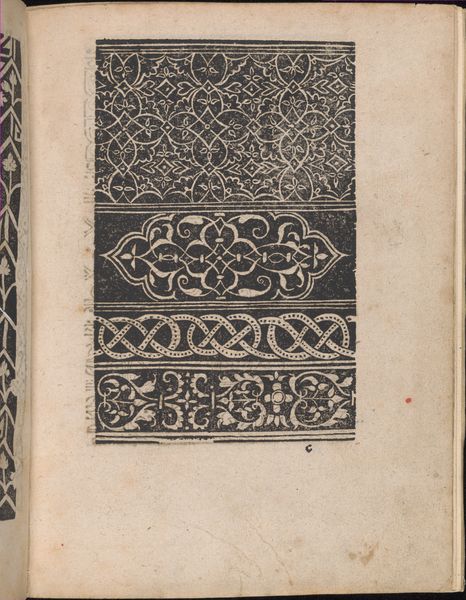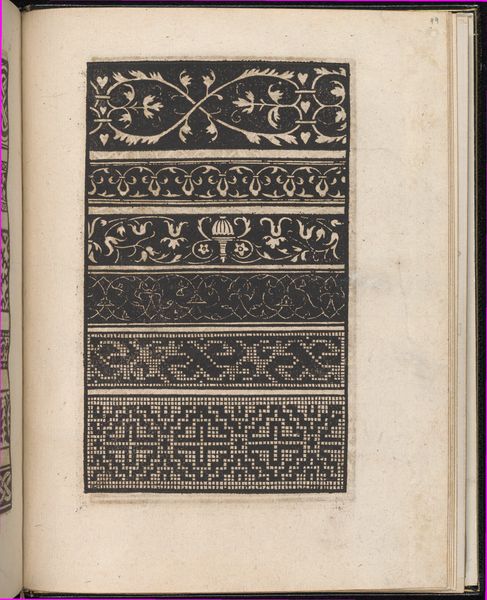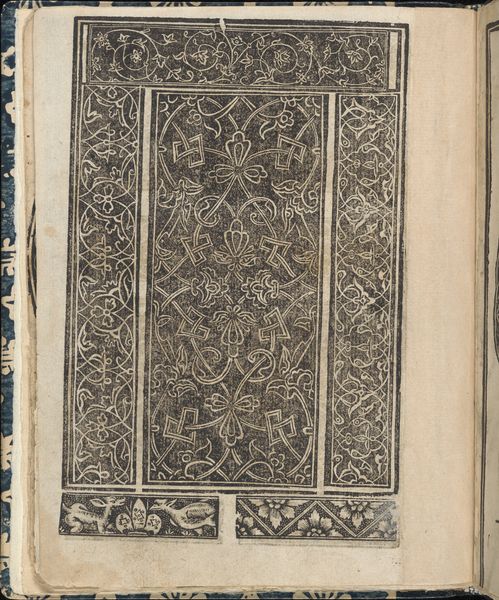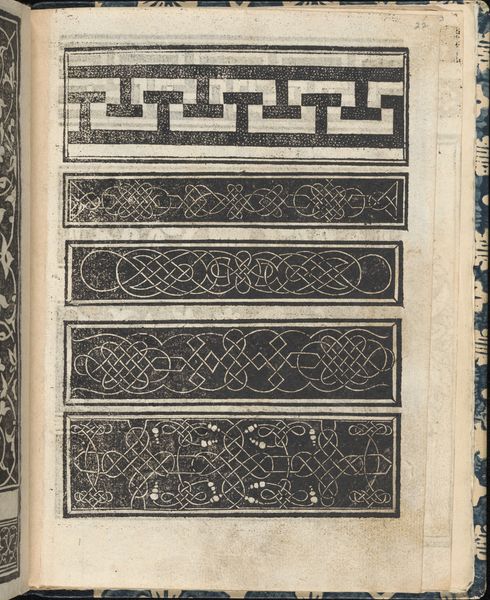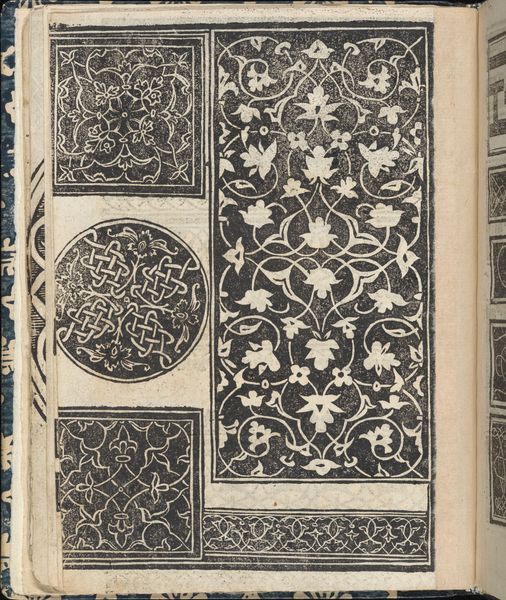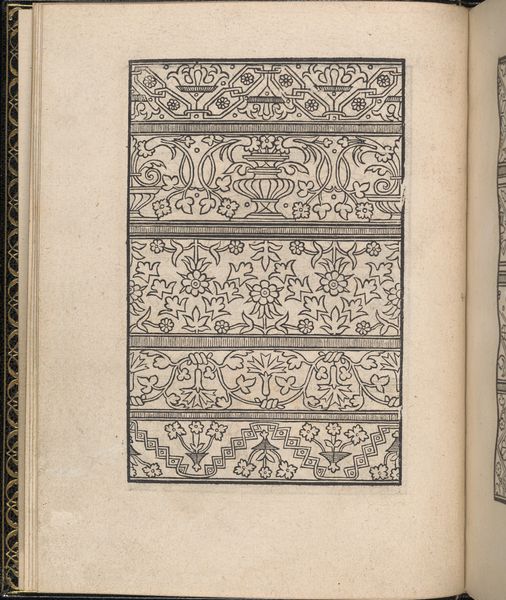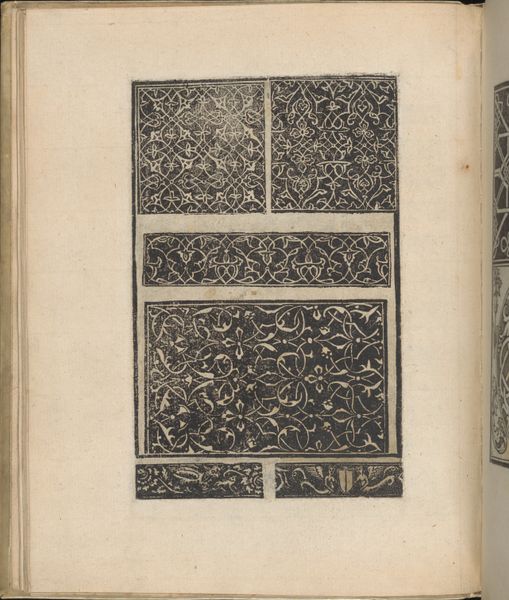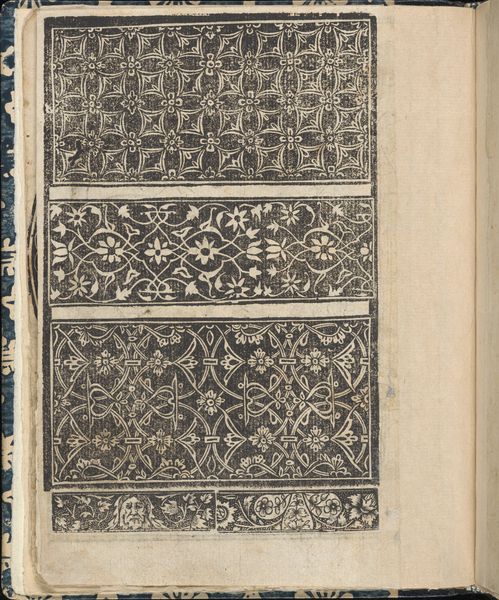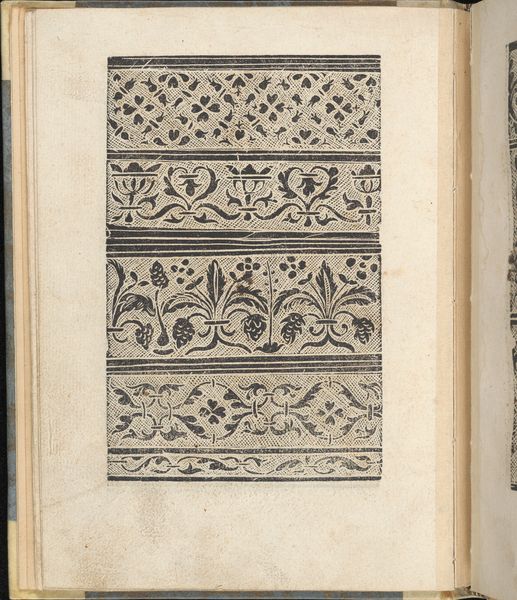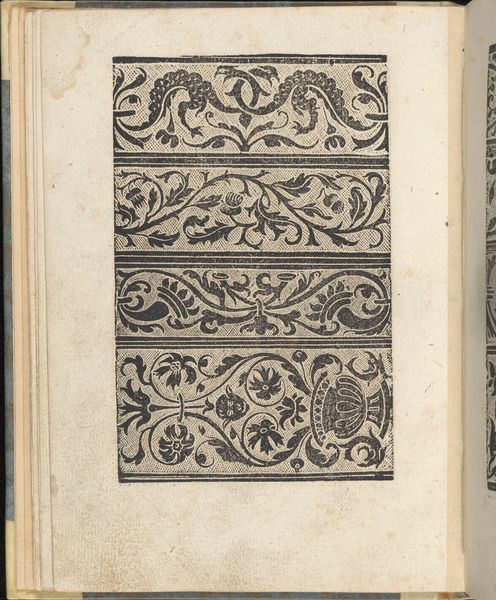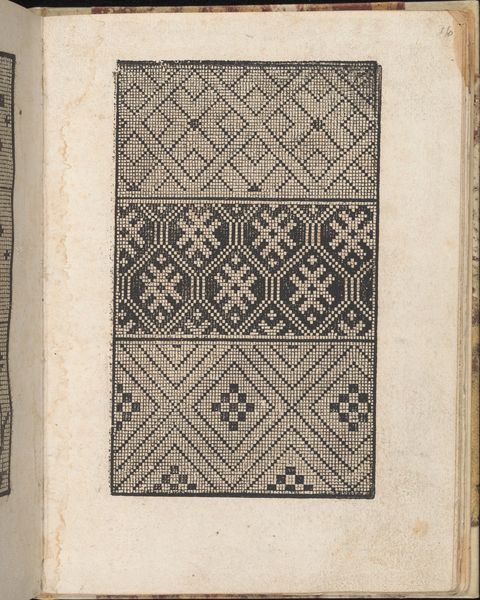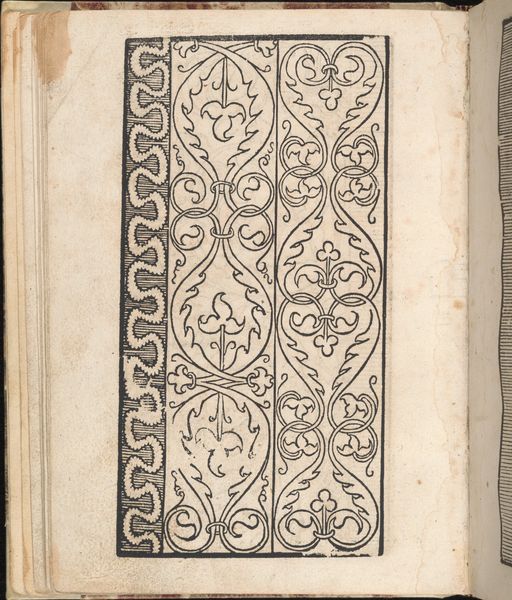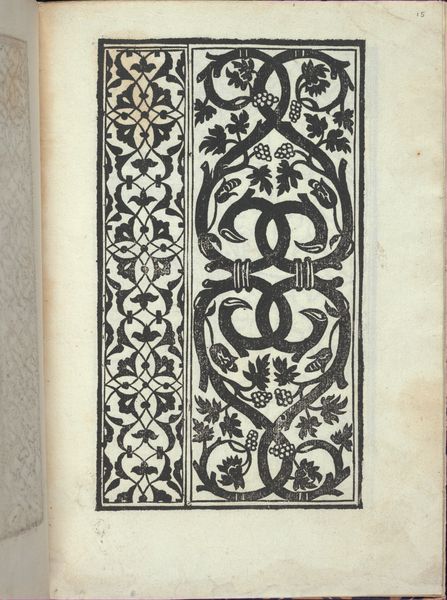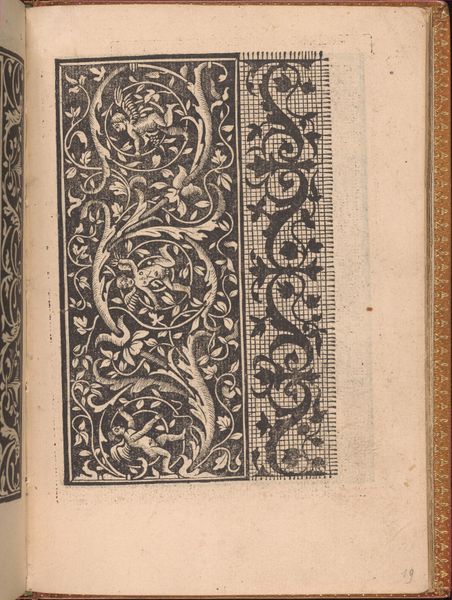
drawing, graphic-art, print, woodcut
#
drawing
#
graphic-art
# print
#
form
#
11_renaissance
#
geometric
#
woodcut
#
line
#
italian-renaissance
Dimensions: Overall: 7 13/16 x 6 3/16 x 3/8 in. (19.8 x 15.7 x 1 cm)
Copyright: Public Domain
Curator: My eye is immediately drawn to this graphic intensity, these fields of dense geometric abstraction. Editor: Indeed! What we’re seeing here is “Essempio di recammi, page 14 (recto)” from around 1530, an example of graphic art conceived by Giovanni Antonio Tagliente. It’s held in the collection of the Metropolitan Museum of Art. Tagliente used a woodcut print to illustrate various embroidery patterns. Curator: Embroidery patterns, you say? The patterns feel vaguely familiar, echoing, say, tiled courtyards in some old palace, or details lifted from brocade… Like the echo of something once tangible, translated into pure form. Editor: Exactly! These forms function almost as cultural memory themselves. Consider the shapes: many echo Islamic geometric designs, popular at the time. Look closely—see how floral and arabesque motifs intertwine? Curator: Yes, and it’s the relationship between those figures that fascinates, as the interplay generates new visual experiences and associations. I suppose its functionality can cause us to easily overlook this level of detail. It speaks to Renaissance artists viewing even functional, “minor” arts, as integral to daily life. Editor: Certainly. In its time, pattern books like this disseminated visual ideas, cross-pollinating styles across Europe and informing a shared visual vocabulary. The Renaissance saw such an interesting synthesis between art, craft, and visual communication, really breaking away from the medieval separation between so-called ‘high’ and ‘low’ arts. Curator: Which perhaps brings us back to embroidery itself. I find myself drawn into its world, into acts of touching, manipulating threads, slow gestures. Maybe something profound is going on within such simple movements. Editor: That is quite astute. Something in these abstract forms whispers about the quiet, meticulous work of artisans; all this symbolic richness channeled through their hands, and presented in pattern, a thing of utilitarian beauty. Curator: Absolutely! Well, I for one find myself eager to visit the studio to play with colors and weave some magic on fabric. Editor: And I am taking away from this reflection an appreciation of cultural symbols woven, quite literally, into our daily routines.
Comments
No comments
Be the first to comment and join the conversation on the ultimate creative platform.
